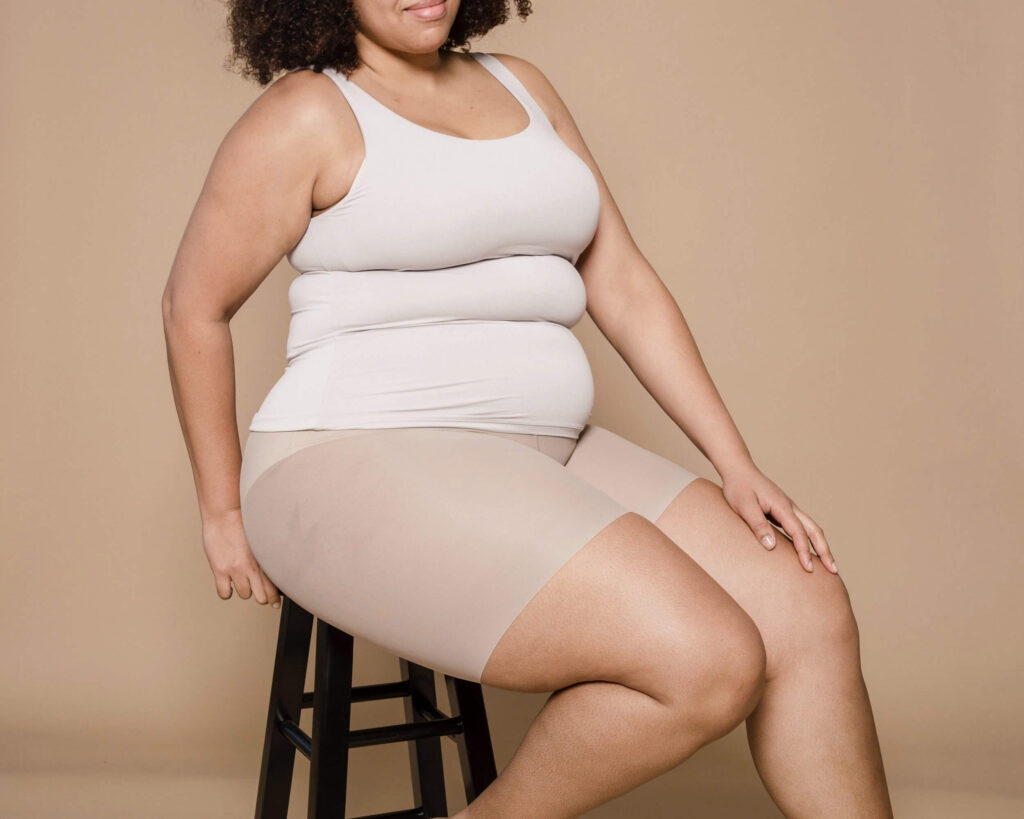Chronological age might give you the number of years since you were born, but it will not give you a statistic on whether you are metabolically healthy or not. That’s where metabolic age comes in. Metabolic age is one of the emerging markers of metabolic health and metabolism. Let’s understand these two terms and their relationship with how your body utilises energy before we get into metabolic age.

Highlights
- Metabolic age is quickly emerging as one of the markers of metabolic health and metabolism,
- Metabolic age is calculated by comparing your Basal Metabolic Rate to the average BMR of your chronological age group,
- For your body to function normally, it requires essential nutrients, including energy, that come from the food and drinks we consume.
What is Metabolism?
Metabolism is a series of chemical processes in each cell transforming the calories we eat into fuel to keep us alive. These processes sustain life, and everyday functioning and include breaking down food and drink to energy and building or repairing our bodies. Metabolic health is described as having ideal levels of blood sugar, triglycerides, high-density lipoprotein (HDL) cholesterol, blood pressure, and waist circumference, without using medications.
Metabolism and Energy Expenditure
Metabolism provides the energy your body needs to breathe, circulate blood, grow and repair cells, and everything else it does to survive. There are two processes of metabolism – Catabolism and Anabolism. The body regulates both processes carefully to make sure they remain in balance.
- Catabolism: It breaks larger structures like proteins, fats, or tissues down into smaller units such as cells or fatty acids. Take digestion, for instance, the food we consume – carbohydrates, proteins, and dietary fats break down into simpler forms to provide energy to the body. The three stages of Catabolism are:
– Stage of digestion: In this stage, the disintegration of complex molecules like proteins, lipids, and polysaccharides takes place as they are not absorbable.
– Stage of energy release: The disintegrated molecules are taken up by cells and converted to smaller molecules, usually acetyl coenzyme A (acetyl-CoA), which releases some energy.
– Stage of energy storage: The released energy is stored for basic building blocks needed for growth and repair. - Anabolism: It is antithetical to catabolism. It bonds smaller units like nutrients, cells, or amino acids together. Anabolism centres around growth and building. It is a set of metabolic pathways that organize and construct small, simple molecules into large complex ones. Anabolism uses energy that comes from food. Examples of anabolism include bone growth and mineralization, and muscle mass build-up. When your body is trying to heal a wound, anabolism adds tissue and structures around that wound. The three stages of anabolism are as follows:
– Production of predecessors: In this stage, predecessors like amino acids, monosaccharides, isoprenoids, and nucleotides are formed.
– Energy consumption: Stimulation of these precursors into reactive forms using energy from ATP.
– Molecule formation: Congregation of these precursors into complex molecules such as proteins, lipids, polysaccharides and nucleic acid.
At any given time inside the body, thousands of chemical reactions are taking place to keep cells healthy, thriving, and functioning. For the body to function normally, it requires essential nutrients, including energy (kilojoules), that come from the food and drinks we consume. The amount of energy your body burns at any given time is directly affected by your metabolism.
How bodies use energy
1. Energy used at rest: The body’s basic functioning requires energy even when you are doing nothing. Your heart pumps blood through veins, maintaining body temperature or your kidney function, requiring a minimum number of calories needed for these basic functions. This process is known as basal metabolism. The BMR accounts for approximately 60 to 80 per cent of the daily energy expenditure. It includes energy used for cardiac function, brain, and other nerve functions. The normal BMR for a healthy man is around 7,100 kJ per day while the average BMR for a healthy woman is around 5,900 kJ per day. It’s important to note that the rate of energy expenditure varies during the course of the day. It is known to decrease with age.
RMR or resting metabolic rate is the number of calories that your body burns while it’s at rest. One popular way to estimate BMR is through the Harris-Benedict formula, which takes into account weight, height, age, and gender. Understanding your BMR, your typical activity level, and the number of calories you need daily to maintain your weight are important ways for you to actively participate in your physical health. Your BMR is determined by factors like sex, age, ethnicity, height, weight, weight history, body composition, and genetic factors.
2. Energy used to break down food: This process is called the thermic effect of food (TEF). It is the energy required for digestion, absorption, and disposal of ingested nutrients. TEF uses 10% of energy. It is defined as ‘the increase in metabolic rate after ingestion of a meal’.
3. Energy used for activity: Activity energy expenditure (AEE) is the most variable component. It includes exercise and non-exercise activity thermogenesis (NEAT). Exercise and NEAT can comprise 20–50% of total energy expenditure. NEAT is everything that we do that is not sleeping, eating, or sports-like exercise. It is the energy expended in daily tasks like standing, walking, typing, cooking, gardening, and even fidgeting.
4. Sleeping Metabolic Rate: SMR refers to the energy expended during sleep. According to Dr Michael Breus, a sleep specialist, author and expert, glucose metabolism starts to increase in the second half of the night when you enter REM sleep.

What is Metabolic Age?
The Metabolic age is calculated by comparing Basal Metabolic Rate to the average BMR of the chronological age group. If your metabolic age is higher than your actual age, it’s a sign that you need to improve your metabolic rate. Increased exercise will build healthy muscle tissue, which in turn will improve your metabolic age. Muscle burns more than fat, which means someone who has a high level of muscle mass will burn more calories sitting at their desk than someone with a lower muscle mass. So the fitter, healthier, and stronger you are, the lower your metabolic age will be. If your metabolic age is lower than your actual age, it means your body is in good health. Some adults can have the metabolic age of a 15-year-old or lower, which means their body is top of the class at burning calories.
In the latest research, metabolic age was calculated after fasting and taking into account:
- Body composition
- Waist circumference
- Resting blood pressure
Special software was employed with a 5-day diet analysis. The assessment for relative metabolic age was derived by subtracting chronological age from metabolic age.
BMR and Metabolic Age
Your BMR is the minimum number of calories it takes for your body to function at rest. So, it includes the calories you burn without so much as lifting a finger. Even when you’re being a total couch potato, you’re burning calories through things like breathing, digestion, and blood circulation. BMR doesn’t factor in physical activity. This is important because about 60 to 75% of the calories you burn each day happen while you’re seemingly doing nothing. To estimate your BMR, you have to factor in your sex, height (in centimetres), weight (in kilograms), and age. You can use the Harris-Benedict Equation calculator for this.
BMR is sometimes called resting metabolic rate (RMR). A study of scientific articles measuring RMR concluded that there’s no single RMR value that’s appropriate for all adults. Body proportions and demographic characteristics may complicate these estimates. Resting energy expenditure (REE) represents the actual number of calories spent at rest. Arriving at your REE requires fasting and measurement by indirect calorimetry. In this test, you have to lie down under a transparent dome. A technician monitors your resting energy expenditure. Though BMR and REE are calculated differently, the difference is less than 10%, so these terms may be used interchangeably.
What does metabolic age mean for your health? Is it also a predictor of metabolic syndrome?
It’s an important indicator of how hardworking your metabolism is. It also steps away from using your ‘real age’, or the number on traditional weighing scales, to define your fitness. Your metabolic age shifts the focus away from weight and focuses more on your body’s structure, or composition, of muscle and fat. BMR reduces as we get older and often contributes to the fact that we may gain weight as we age – despite the fact we may be following the same diet we’ve always done,” says Dr Rekha Tailor, cosmetic doctor at Health and Aesthetics. Knowing your BMR can help you feel less frustrated, especially if you’re on a weight loss journey or want to give your general health an overhaul, and feel like you’re not making progress.
Whatever your BMR measurement, there’s always room for improvement, and there are a number of concrete steps you can take to lower your metabolic age. If your metabolic age is younger than your actual age, this is great news and shows you’re in good shape – some adults manage to knock 20 years off their real age. If your metabolic age is higher, this is a sign that you need to improve your metabolic rate by changing your diet and fitness habits and getting any possible health problems checked out by your general practitioner.
Metabolic syndrome is a cluster of conditions that occur together, increasing your risk of heart disease, stroke, and type 2 diabetes. These conditions include increased blood pressure, high blood sugar, excess body fat around the waist, and abnormal cholesterol or triglyceride levels. Having just one of these conditions doesn’t mean you have metabolic syndrome. But it does mean you have a greater risk of serious disease. And if you develop more of these conditions, your risk of complications, such as type 2 diabetes and heart disease, rises even higher. A consistently high metabolic age can be one precursor to metabolic syndrome.

How can you improve your Metabolic Age?
Here are a few points you don’t want to miss, on how to reduce or decrease your metabolic age:
1. Eat more protein: Your body burns more calories by digesting protein-rich foods than fat-rich foods, which means eating more protein can help fight an ageing metabolism. A simple way to do this is to make sure you have a source of protein in every meal. A study showed that individuals with a younger relative metabolic age consumed significantly more grains, lauric acid, meat alternatives, a greater percentage of calories from polyunsaturated fatty acids, and were inclined towards consumption of greater amounts of vegetable protein.

2. Muscle mass: It has a huge impact on your metabolism, so strength and resistance training can help to speed it up and also burn more calories in the process. As you get older and your metabolism slows down you should consider doing more strength training to improve muscle mass to ensure your metabolic age stays as low as possible.
3. Sleep: A lack of sleep can slow down metabolism and poor sleep may actually increase muscle loss.
4. Drink more cold water: People who drink water instead of sugary drinks are more successful at losing weight and keeping it off. Studies have shown that drinking 17 ounces (0.5 litres) of water increases resting metabolism by 10–30% for about an hour. This calorie-burning effect may be even greater if you drink cold water, as your body uses energy to heat it up to body temperature.
5. Drink Green Tea or Oolong Tea: Green tea and oolong tea have been shown to increase metabolism by 4–5%. These teas help convert some of the fat stored in your body into free fatty acids, which may increase fat burning by 10–17%. As they are low in calories, drinking these teas may be good for both weight loss and weight maintenance.
Conclusion
In a nutshell, your metabolic age is based on what’s called your Basal Metabolic Rate – often known as just BMR, compared to the average BMR of someone of the same age. Your BMR tells you how many calories your body burns while resting, and it’s a good gauge of your efficiency in burning the calories you consume. Your metabolic age is your BMR compared to others in your age group. So, if your metabolic age comes out to your chronological age, you’re similar to the rest of the population of people your age. If your metabolic age is lower than your chronological age, that’s probably a good sign. If it’s higher, you may want to take a look at your dietary habits and exercise routine. There are ways to improve your metabolic age which involve protein consumption, good sleep, drinking cold water, and green or oolong tea.
Disclaimer: The contents of this article are for general information and educational purposes only. It neither provides any medical advice nor intends to substitute professional medical opinion on the treatment, diagnosis, prevention or alleviation of any disease, disorder or disability. Always consult with your doctor or qualified healthcare professional about your health condition and/or concerns and before undertaking a new health care regimen including making any dietary or lifestyle changes.
Reference








